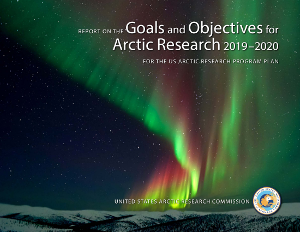New Website
The University of Alaska Fairbanks High-frequency Active Auroral Research Program is pleased to announce the launch of our newly redesigned website: https://haarp.gi.alaska.edu/. Learn about HAARP news, frequently asked questions, diagnostic instruments, research support services, merchandise and more. Plus, in collaboration with our international and national research partners, you can see a diagnostic suite of on-site geophysical instruments and view real-time data.
Open House
After three successful open house events in 2016, 2017 and 2018, the HAARP Ionospheric and Radio Science Laboratory in Gakona, Alaska, will not be having an open house in 2020. We’re optimistic we’ll be able to open the facility to the public again in 2021.
Due to the COVID-19 pandemic, we are not hosting large public events. After consultation with Geophysical Institute leadership, we are taking this step to prevent both the public and staff members at the site from being infected with the novel coronavirus in our remote setting, which is far from medical assistance. As there are COVID-19 cases across the globe, there is no reasonable way to assure travelers to Gakona are free of the virus.
We recognize not having an open house this year is disappointing for many of you who plan your summer vacations around it. The good news is we’ve been hard at work growing the research site, and are excited to share our progress:
Planning for Sustainability

We’re continuing our work with University of Alaska leadership and our Alaska congressional delegation to develop policy language and funding models that will sustain the research facility well into the future. To further discussions at a national level, a HAARP Summit was conducted at the Woodrow Wilson Center in Washington, DC, in April 2019, which resulted in strong support from the research community. HAARP was also included in the United States Arctic Research Commission Goals and Objectives For Arctic Research Report for 2019-2020 which can be found here (page 20).
Public Information
We’ve revitalized our public web page, installed new research instruments, and added links to real time data feeds. Check out new information on our diagnostic suite and research support services.
Diagnostic Suite
Many passive scientific instruments at the site operate continuously to monitor the natural geomagnetic environment. In collaboration with our international and national researcher partners, we’ve made real time data collected at the site available here.
Research Growth
While the 33-acre Ionospheric Research Instrument gets most of the attention, the research site also maintains a suite of equipment, sensors and cameras. In addition to our current diagnostic suite that includes a riometer, ionosonde, weather station, seismic station, magnetometer, Wrangell webcam, and aurora forecast, here’s what’s new:
- Reeve Observatory. A high-frequency (HF) amateur space weather, planetary radio emissions and radio propagation research station which monitors solar radio bursts and Jupiter radio emissions. Data collected is publicly available and is used to study space weather effects on high-latitude radio propagation.
- e-CALLISTO Project. A solar radio wave spectrometer that contributes data to the International Space Weather Initiative (ISWI) CALLISTO project. The main applications are observation of solar radio bursts and radio frequency interference (RFI) monitoring used for astronomical science, education and outreach.
- NASA Radio JOVE Project. A hands-on inquiry-based outreach project that allows students, teachers and the general public to learn about radio astronomy by building their own radio telescope from an inexpensive kit and/or using remote radio telescopes through the internet. Participants collaborate with each other through interactions and sharing of data on the network. Institutions and more advanced observers can set up a radio spectrometer designed to monitor radio waves from Jupiter and the Sun in the 15-30 MHz spectrum, as well as, study radio propagation through the ionosphere and space weather.
- Earth Networks Lightning Detection Network Sensor. Equipment supplied by Earth Networks, with data available through their worldwide lightning detection network.
Community Support and Engagement
While we won’t be putting on an open house this year, we’re continuing to look for ways to bring HAARP research to the public. You’ll find a network of #UAFHAARP supporters on social media. Follow real-time developments with us on Twitter @UAFHAARP and @UAFGI and our Facebook pages. We encourage you to share the social media posts with your network so we can extend the conversation with a broader range of Alaskans and research stakeholders.
Thank you for your continued support. For further questions, please email UAF-GI-HAARP@alaska.edu or call 907-474-1100.
